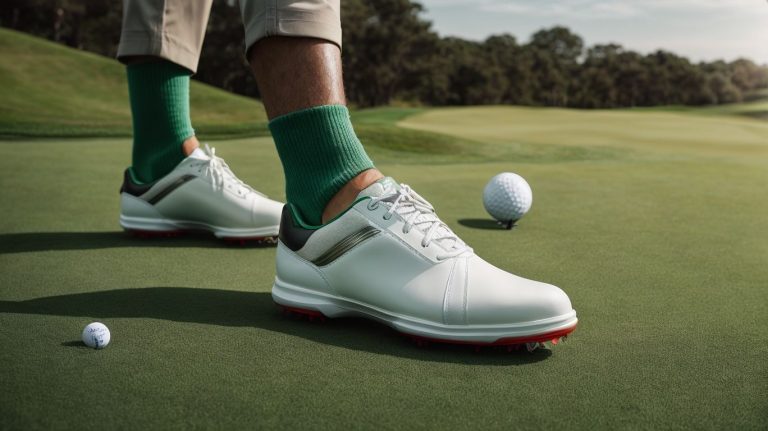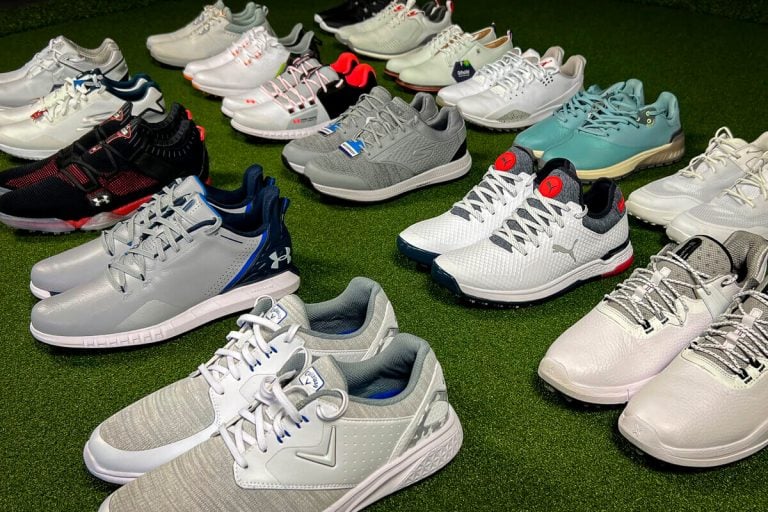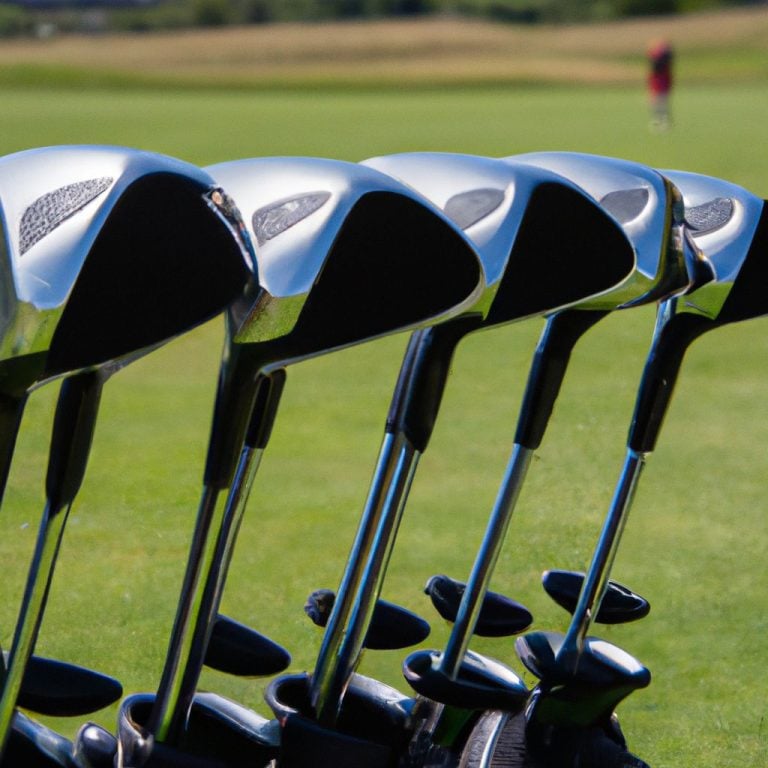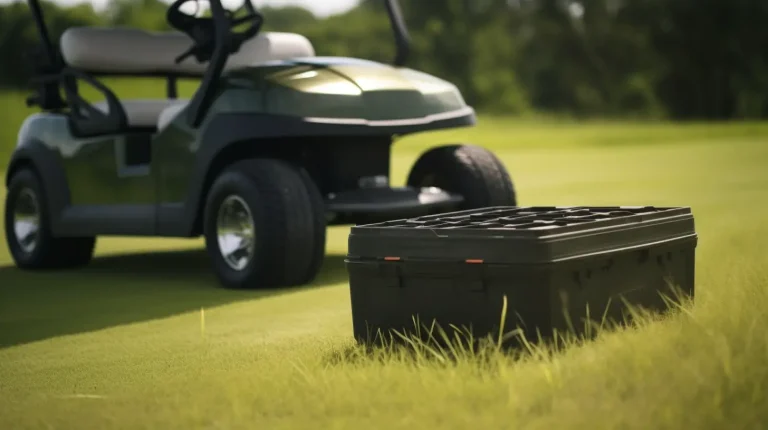Unlock Your Golf Game: Top 10 Best Wedge Shafts for Superior Performance
.jpg)
Looking to improve your golf game with the best wedge shafts on the market? In this article, we will explore the importance of shaft selection and the factors to consider when choosing the right one for your game.
We will discuss the differences between steel and graphite shafts, as well as the various flex options and weight considerations to keep in mind. We will delve into how shaft performance can impact spin, trajectory, control, and feel on the course.
Stay tuned as we review the top manufacturers and share expert recommendations, user experiences, and reviews to help you make the best decision for your game. Let’s find the perfect wedge shaft for you!
Key Takeaways:
Introduction
Regarding golf equipment, the choice of shafts can significantly impact a player’s performance on the course. From wedges to irons, understanding the nuances of shafts like Dynamic Gold and True Temper is crucial for players looking to optimize their game.
Shaft selection is a critical aspect of a golfer’s club setup, as it influences the feel, control, and distance of each shot. Factors such as weight, flex, and material all play a role in determining the performance of a shaft.
- Weight: Lighter shafts can help increase clubhead speed, while heavier shafts provide more control and stability during the swing.
- Flex: The flexibility of a shaft affects the trajectory of the ball, with options ranging from extra stiff to ladies flex to suit different swing speeds and styles.
- Material: Shaft materials like steel, graphite, and composite blends impact the overall responsiveness and vibration dampening properties of the club.
Professional players on the PGA, LPGA, and Champions Tours understand the importance of custom shaft setups tailored to their individual preferences and playing styles. Brands like KBS Tour and Nippon Modus 3 are renowned for their high-quality shaft offerings that cater to the diverse needs of players at all levels of the game. Whether it’s achieving optimal launch conditions, maximizing distance, or enhancing accuracy, the right shaft can make a significant difference in a golfer’s overall performance on the course.
Understanding Wedge Shafts
Understanding wedge shafts is crucial for golfers aiming to improve their short game performance. Apart from the clubheads, the choice of shafts like Dynamic Gold or True Temper can greatly influence the feel and spin of wedge shots.
Importance of Shaft Selection
The importance of shaft selection cannot be overstated when it comes to optimizing wedge performance on the golf course. Factors like weight, flex, and profiles play a critical role in achieving shot consistency and control.
Choosing the right shaft for your wedges can significantly impact your game. The weight of the shaft affects the feel and control of your shots; a lighter shaft can provide more clubhead speed, while a heavier one offers stability. Flex is crucial as it influences the trajectory and spin of the ball. Different profiles, such as low, mid, or high launch, cater to varying swing types.
Wedge-specific flex options cater to the needs of short game shots, ensuring optimal performance in delicate situations. The shaft weight and swing weight must complement each other for a harmonious feel throughout the swing. A well-fitted wedge enhances your ability to hit precise shots with the right spin and control. Through a proper fitting, a player’s wedge setup can be optimized for their unique swing characteristics, enhancing their confidence and performance on the course.
Factors to Consider
When considering wedge shafts, golfers should account for various factors such as weight, flex, and material to ensure optimal performance. Factors like club lofts and lies can affect how a wedge interacts with the turf and influences shot trajectory.
Weight of the shaft plays a crucial role in determining the overall feel and swing weight of the club, directly impacting a golfer’s ability to control the wedge during various shot types. The flex of the shaft, whether it’s stiff, regular, or senior, affects how the clubhead releases through impact, ultimately influencing the shot’s spin and accuracy. Material choice, such as steel or graphite, can also impact the overall weight and feel of the club, catering to different preferences.
Types of Wedge Shafts
There are two main types of wedge shafts commonly used in golf: steel and graphite. Steel shafts provide a solid feel and are preferred for shot shaping, while graphite shafts offer lighter weight and can help golfers achieve softer shots.
Steel shafts are known for their durability and stability, making them ideal for golfers who prioritize shot precision and control. The weight of steel shafts aids in maintaining a consistent swing tempo and can enhance shot shaping abilities by providing a more substantial feel at impact.
On the other hand, graphite shafts excel in generating higher clubhead speed due to their lighter construction. This feature promotes easier launch and increased distance, making graphite shafts a popular choice for golfers looking to add more finesse to their short game.
Steel vs. Graphite
Choosing between steel and graphite shafts for wedges involves considering factors like material composition, weight, and flex. Steel shafts are known for their durability and consistent performance, while graphite shafts offer lighter options with varying flex levels.
Steel shafts, be it forged or cast, are favored by many golfers for their robustness and ability to provide a consistent feel shot after shot. The inherent strength of steel makes these shafts ideal for golfers who seek stability and precision in their wedge play.
On the other hand, graphite shafts are lauded for their lightweight properties, which can enhance swing speed and ultimately lead to greater distances. These shafts are particularly beneficial for players looking to increase clubhead speed without compromising on control.
Ultimately, the choice between steel and graphite shafts boils down to personal preference, playing style, and desired performance outcomes. Players with a smooth tempo and seeking more distance may lean towards graphite shafts, while those valuing control and consistency might opt for the reliability of steel shafts.
Choosing the Right Shaft
Selecting the right shaft for your wedges involves evaluating critical factors such as flex, weight, and shaft options to match your swing dynamics and optimize ball flight consistency. Skilled golfers may benefit from custom fitting services to find the ideal shaft setup for their game.
When considering the flex of a wedge shaft, it’s important to understand how it affects the control and feel of your shots. A shaft that is too stiff may not allow for enough power transfer, while one that is too flexible can lead to inconsistent strikes. The weight of the shaft also plays a significant role, influencing the overall feel of the club and the timing of your swing.
Shaft selection is highly personalized and can greatly impact your performance on the course. By visiting a skilled golfer fitting facility, you can undergo a thorough analysis of your swing mechanics and ball flight characteristics to receive tailored recommendations for the most suitable shaft options. These facilities utilize advanced technology and expert knowledge to ensure that your shaft choice enhances your shot consistency and maximizes your overall playing potential.
Flex Options
Flex options in wedge shafts play a vital role in customizing the feel and performance of shots. By matching the shaft’s flex to a player’s swing tempo and shot grouping tendencies, golfers can achieve more consistent and controlled wedge play.
Understanding the flex options available in wedge shafts is crucial for golfers looking to optimize their performance on the course. When players choose a flex that aligns with their swing characteristics, they can experience improved shot consistency and accuracy. For instance, a player with a faster swing tempo might benefit from a stiffer flex to maintain control and prevent excessive twisting during impact.
On the other hand, golfers with a slower swing tempo might find a softer flex more suitable as it allows for better energy transfer and increased shot feel. Matching the flex to one’s swing tendencies can lead to tighter shot groupings, especially on approaches and delicate shots around the green.
Weight Considerations
When considering wedge shafts, weight considerations are crucial for optimizing club speed, swing weight, and overall shot performance. Skilled golfers can benefit from understanding how shaft weight affects their swing dynamics and club speed.
Choosing the right weight for wedge shafts is essential as it directly impacts the golfer’s swing speed. A lighter shaft can help increase clubhead speed, resulting in longer distances, while a heavier shaft provides more control and accuracy. The weight of the shaft contributes to the club’s swing weight, influencing how the club feels during the swing.
By fine-tuning the weight distribution in their wedge shafts, golfers can adjust the feel of their clubs to match their swing style and preferences. This customization enables players to optimize their swing mechanics, leading to improved shot consistency and performance on the course.
Shaft Performance
Shaft performance is a critical aspect of wedge play, impacting factors such as spin, feel, flight consistency, and shot shaping abilities. Understanding how different shaft characteristics affect land zones and shot distance is essential for optimizing wedge performance.
One key property of shafts that affects wedge performance is their flex. The flex of a shaft can significantly influence the feel of the club and the amount of spin generated on the ball. A stiffer flex typically produces lower launch angles, leading to more control and accuracy, while a softer flex can increase spin rates for those looking to add more stopping power on the greens.
The weight distribution in a shaft can impact the flight consistency of wedge shots. Heavier shafts may provide more stability and control, especially on full swings, while lighter shafts can offer increased clubhead speed and potentially more distance. Finding the right balance between weight and flex is crucial for adapting to various shot situations and achieving desired results.
Impact on Spin and Trajectory
The shaft’s design and characteristics have a significant impact on spin and trajectory control in wedge shots. By optimizing shaft properties like weight distribution and tip stiffness, golfers can achieve better flight consistency and shot performance on the course.
Weight distribution plays a crucial role in determining the overall feel and balance of the shaft, influencing how the clubhead interacts with the ball at impact. Tip stiffness affects the amount of deflection in the shaft during the swing, impacting the release of energy into the ball.
When these properties are tuned correctly, they can lead to more accurate and predictable shots, especially in delicate wedge plays around the greens. A shaft with a softer tip section allows for a smoother loading and unloading process during the swing, promoting a consistent and controlled motion that is key for precise wedge shots.
Control and Feel
Control and feel are integral components of wedge play, heavily influenced by the shaft’s characteristics and design. Achieving the right balance between control for shot shaping and feel for shot distance is crucial for skilled golfers looking to optimize their wedge performance.
Regarding wedge play, the shaft’s characteristics play a significant role in dictating the player’s ability to achieve consistent and precise shots. For skilled golfers, selecting the appropriate shaft can mean the difference between a mediocre shot and a game-changing one. Shaft options that enhance turf interaction can lead to cleaner contact with the ball, while those that promote flight consistency help in controlling the trajectory and spin. An optimized shaft selection and layout can not only improve shot control but also enhance the overall experience and confidence in executing wedge shots.
Popular Brands
Regarding wedge shafts, several popular brands have gained recognition for their innovation and performance. Companies like ZNE, BreakThrough Golf Technology, ACCRA, and Fujikura offer a range of high-quality shaft options for players seeking optimal performance and fitting customization.
Each of these brands has its unique selling points. For instance, ZNE is known for its cutting-edge materials and technology that enhance control and spin. BreakThrough Golf Technology focuses on reducing vibrations for a smoother feel, while ACCRA emphasizes precision engineering for consistent results on the course.
Conversely, Fujikura is renowned for its extensive customization options tailored to individual players’ needs. The PXG 0311XP and PXG 0311 Gen 2 models stand out for their tour-level quality and unparalleled fitting versatility, making them popular choices among professional and amateur golfers alike.
Reviewing Top Manufacturers
Top manufacturers in the golf industry, including those favored by professionals on tours like PGA, LPGA, and Champions Tour, offer premium shaft recommendations and fitting services. By partnering with leading brands such as KBS Tour and Nippon Modus 3, players can enhance their overall wedge performance and shot grouping consistency.
These top manufacturers are highly regarded for their commitment to excellence in crafting golf equipment that meets the demands of professional players. Brands like KBS Tour and Nippon Modus 3 have earned a stellar reputation for producing tour-level quality shafts designed to optimize performance on the course.
Professional golfers on the PGA, LPGA, and Champions Tours have long benefited from the precision engineering and superior materials used in these brands’ offerings. The bespoke fitting services provided by these manufacturers ensure that each player’s equipment is tailored to their specific swing characteristics, resulting in improved control and accuracy.
Expert Recommendations
Expert recommendations for wedge shafts often emphasize the importance of finding the right balance between stiffness, weight, and flex to optimize turf interaction, flight consistency, and shot performance. Models like Zelos 77.5 g, PXG 0311XP, and PXG 0311 Gen 2 offer options for softer golf shafts or stiffer alternatives tailored to skilled golfers’ needs.
When choosing a wedge shaft, players must carefully consider their swing characteristics, playing style, and overall performance goals. The Zelos 77.5 g shaft, known for its lightweight design, assists in generating higher launch angles, making it ideal for players looking to add more height to their shots. On the other hand, the PXG 0311XP and PXG 0311 Gen 2 shafts provide exceptional stability and control, catering to golfers seeking precise shot-making capabilities.
- For those who prefer a softer feel and increased spin around the greens, the Zelos 77.5 g shaft can enhance touch and finesse.
- Players who require additional distance control and a consistent ball flight trajectory might benefit from the stiffer characteristics of the PXG shafts.
A professional club fitting session can be instrumental in determining the most suitable shaft option based on swing speed, tempo, and release patterns. Remember, the right wedge shaft can significantly elevate your game by allowing you to execute shots with confidence and precision.
User Experiences and Reviews
User experiences and reviews play a vital role in understanding how different shaft flex options like S200, S400, X100, and R300 impact wedge performance. Models like Modus Wedge and Vokey wedges often receive praise for their consistent shot grouping and versatile performance, catering to players with varying tempo and shot grouping preferences.
Regarding choosing the right shaft flex for your wedges, considering factors like swing speed and shot dispersion tendencies is crucial. For instance, the S200 flex offers a softer feel, ideal for players with a smoother tempo, while the X100 provides a stiffer profile best suited for aggressive swingers.
The R300 and S400 options bridge the gap between these extremes, offering a balance that accommodates a wider range of play styles.
Understanding how your swing characteristics align with these flex options can significantly impact your wedge shot consistency and overall play.
Conclusion
The selection of wedge shafts is a critical component of optimizing a player’s short game performance. By considering factors like flex, weight, and shaft profiles, golfers can achieve better shot consistency, ball flight control, and the ability to execute softer shots around the greens.
Regarding selecting the right wedge shaft, the flexibility, or flex, of the shaft plays a significant role in the feel and performance of the club. Flexibility determines how much the shaft will bend during the swing, impacting the timing and power transfer of the shot. The weight of the shaft influences the overall balance and control of the club, affecting the golfer’s ability to generate spin and launch angle for precise shot-making.
Final Thoughts on Best Wedge Shafts
In evaluating the best wedge shafts, factors such as shaft setup, consistent swing mechanics, and shot shaping capabilities are paramount. By considering the wedge matrix of loft, lie, and length and comparing options through an apples-to-apples lens, players can make informed decisions to improve wedge shot grouping and overall short game performance.
Regarding selecting the optimal wedge shaft, one should pay close attention to how the shaft setup complements their swing style. A shaft that matches the player’s tempo and transition can result in more precise and consistent shots around the green.
The ability to shape shots effectively is key in mastering the short game. The right wedge shaft can enhance a player’s control over trajectory and spin, allowing them to execute a variety of shots with confidence.
The wedge matrix, encompassing factors such as loft, lie, and length, plays a pivotal role in customizing wedges to suit individual preferences. By understanding how these elements interact, players can fine-tune their wedges for optimal performance in different short game scenarios.
Frequently Asked Questions
What are the best wedge shafts for high handicappers?
For high handicappers, we recommend graphite shafts as they provide better feel and forgiveness for off-center shots. Some popular options include Fujikura Pro 95, Project X LZ, and UST Mamiya Recoil.
What are the best wedge shafts for low handicappers?
Low handicappers typically prefer steel shafts as they offer more control and consistency. Some top choices for low handicappers include True Temper Dynamic Gold, Nippon Modus 3, and KBS Tour.
What are the benefits of using the best wedge shafts?
The right wedge shaft can improve your shot accuracy, control, and feel around the greens. It can also help you generate more spin, which is crucial for stopping the ball on the green.
How do I determine the best wedge shafts for my swing?
The best way to determine the right wedge shaft for your swing is to get fitted by a professional. They will consider factors such as swing speed, angle of attack, and release point to recommend the best shaft for your game.
Can I mix and match different wedge shafts?
Yes, you can mix and match different wedge shafts in your set. Many players prefer a heavier shaft in their pitching wedge for better control, while using a lighter shaft in their sand or lob wedge for more feel and finesse around the green.
How often should I replace my wedge shafts?
It is recommended to replace your wedge shafts every 2-3 years or whenever you notice a decrease in performance. Over time, shafts can lose their flex and responsiveness, affecting your shots. Regularly replacing your wedge shafts can help maintain optimal performance.



![Precision and Distance Combined: Exploring the Titleist T300 Irons Review [2024]](https://www.fairwayfindings.com/wp-content/uploads/2023/07/Titleist-T300-Irons-Review-768x569.jpg)


